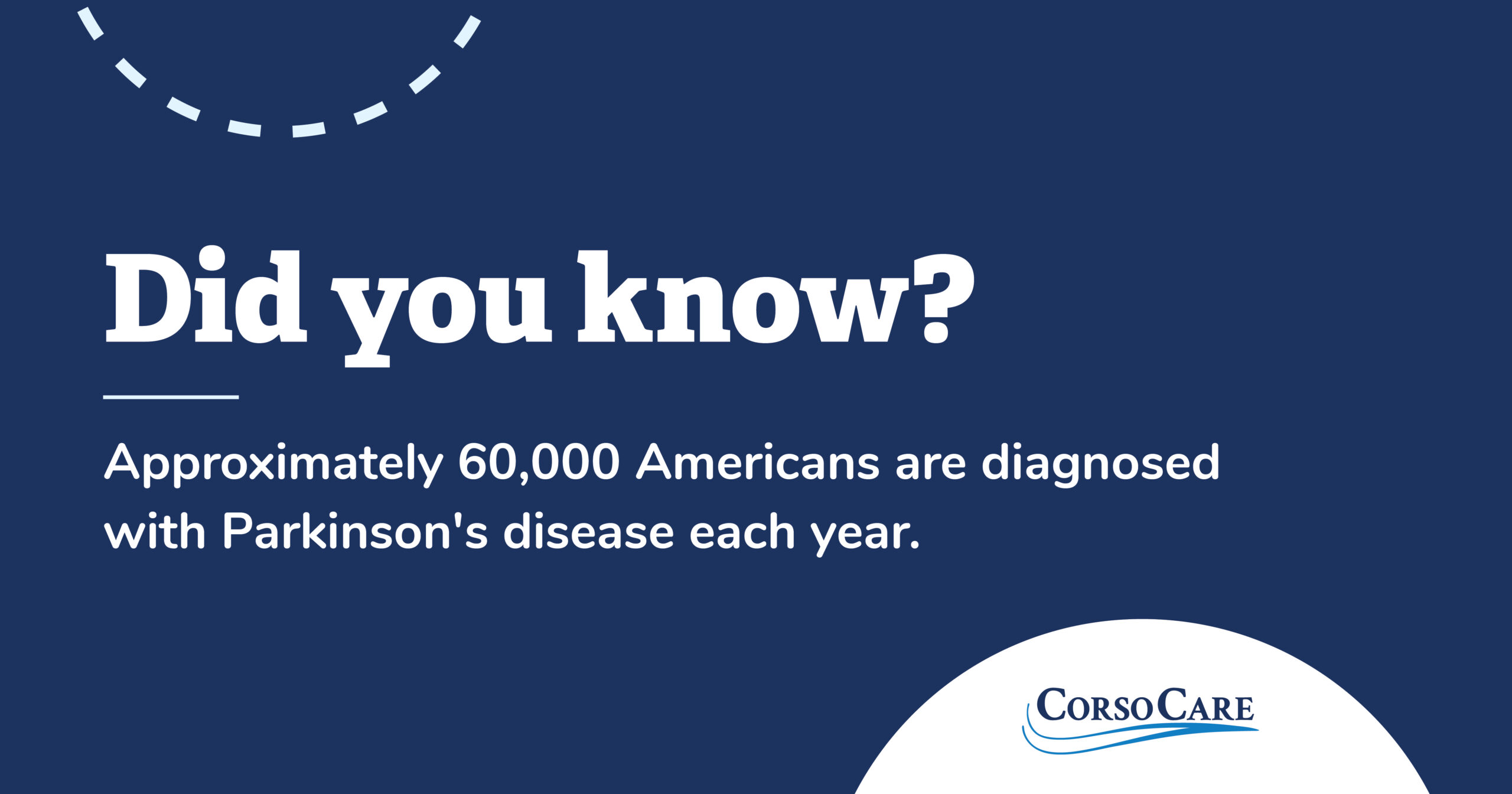Parkinson’s Disease
“If you’ve met one person with Parkinson’s, you’ve met one person with Parkinson’s.”
This common saying from The Michael J. Fox Foundation (MJFF), reminds us that Parkinson’s disease looks different for everyone. Not only is every person with Parkinson’s unique, but so is the onset, progression and treatment of the disease.
Before understanding what a Parkinson’s disease diagnosis looks like for you and your loved one, let’s first start with one question: What is Parkinson’s disease?
What Is Parkinson’s Disease?
According to the Parkinson’s Foundation, Parkinson’s disease (PD) is a progressive, neurodegenerative disorder that depletes dopamine-producing neurons in the brain. Dopamine is a signally chemical that coordinates movement and feelings of motivation and reward. As these dopamine cells decrease, symptoms of Parkinson’s emerge.
Why do these cells die? What is the cause of Parkinson’s disease? Scientists are still unsure.
Based on what we know today, genetic and environmental factors can be a cause of Parkinson’s disease, but research is still ongoing. At this time, there is no cure for Parkinson’s, but medications can help with symptoms and improve a patient’s overall quality of life.
Who Does Parkinson’s Disease Affect?
The risk of developing Parkinson’s disease increases as a person ages. Most people with Parkinson’s start to develop symptoms and are diagnosed around 60 years old. It’s estimated that four percent of people with Parkinson’s were diagnosed before the age of 50 though. Of those diagnosed, men are 1.5 times more likely to have Parkinson’s disease than women.

Approximately 60,000 Americans are diagnosed with Parkinson’s disease each year.
If you or your loved one has received a Parkinson’s diagnosis, you are not alone. In fact, more than 10 million people worldwide are living with Parkinson’s.
Myths About Parkinson’s Disease
There are a lot of misconceptions about Parkinson’s disease and its treatment. Sometimes it’s hard to know what to believe. Here are some of the myths you may have heard about Parkinson’s disease and what is actually true:
Myth
Parkinson’s only affects movement and causes tremors.
Reality
Though tremors, stiffness and slowness are a reality of Parkinson’s disease, that’s not the only symptoms patients experience. Parkinson’s disease affects everyday life with common symptoms such as impaired sense of smell, sleep disorders, cognitive symptoms, constipation, bladder symptoms, sweating, fatigue, pain (particularly in a limb), tingling, lightheadedness, anxiety, and depression.
Myth
If someone with Parkinson’s looks good, then they also feel good.
Reality
Though the progression of Parkinson’s disease often happens slowly, symptoms can fluctuate throughout the day and not all of them are visible. The symptoms that are not related to mobility and motor function can actually be the strongest and impact patients’ daily lives the most.
Myth
There isn’t much you can do to treat Parkinson’s.
Reality
In addition to treating Parkinson’s with medications, there are several changes you can make to your everyday life to help manage your symptoms. Studies have shown that patients with Parkinson’s can benefit from routine exercise and staying active is important. There are also many assistive devices that can also make daily activities more accessible for people with Parkinson’s.
CorsoCare Is Here For You
For more information on Parkinson’s disease and how CorsoCare can support you and your loved one, call us at 248-438-8535.
